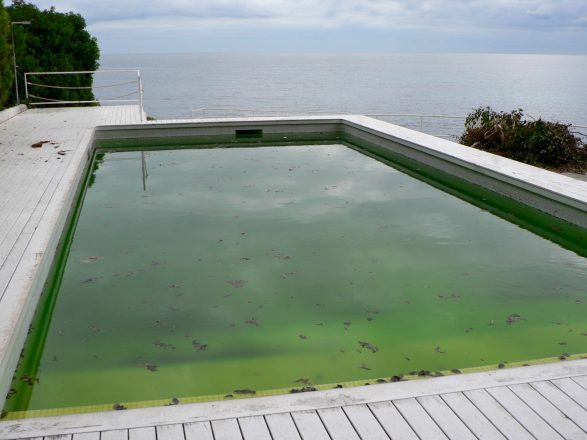Chlorine is a popular and effective chemical used in swimming pool maintenance to sanitize water by killing bacteria, viruses, and algae. When it comes to algae, a common nuisance for pool owners, the question arises: Can chlorine effectively kill algae in a swimming pool? The answer is yes, but with some nuances.
Chlorine kills algae and other microorganisms by breaking down their cell walls and disrupting their metabolic processes, ultimately leading to their death. However, the effectiveness of chlorine in killing algae depends on several factors, including the type of algae, the chlorine concentration, and the pool’s overall chemical balance.
Types of Algae in Pools
There are several types of algae that can infest pool water, including green, black, and mustard algae. Green algae are the most common and the easiest to eliminate with chlorine. Black algae and mustard algae are more resistant due to their protective outer layers and can require higher concentrations of chlorine and additional brushing to remove completely.
Chlorine Concentration
For chlorine to effectively kill algae, the pool must maintain an adequate free chlorine level, typically between 1-3 parts per million (ppm) for regular maintenance. However, when dealing with an active algae bloom, shock treatment may be necessary, which involves raising the chlorine level significantly higher (5-10 ppm or more) for a short period. This high concentration of chlorine is more effective at penetrating algae’s defenses and killing it.
Pool Chemical Balance
The effectiveness of chlorine against algae is not only about the concentration but also about the pool’s overall chemical balance. Factors such as pH level, total alkalinity, and cyanuric acid levels can influence chlorine’s efficacy. For example, an imbalanced pH level can reduce chlorine’s sanitizing power, making it less effective against algae.
Shock Treatment for Algae Removal
Shock treatment is a common method used to kill algae by adding a large amount of chlorine to the pool water. This process involves dispersing a high dose of chlorine or a chlorine-based shock product to quickly raise the chlorine level, effectively killing algae and other organic contaminants. It’s essential to follow the product instructions carefully and usually perform the shock treatment at dusk or night to prevent sunlight from diminishing the chlorine’s effectiveness.
Preventing Algae Growth
While chlorine can kill algae, preventing its growth is equally important. Maintaining proper chlorine levels, regular brushing of pool surfaces, keeping the pool clean, and ensuring efficient water filtration and circulation can help prevent algae from taking hold.
Conclusion
Chlorine is an effective agent for killing algae in swimming pools when used correctly. It requires maintaining proper chlorine levels, understanding the type of algae present, and ensuring the pool’s chemical balance is optimal. Regular maintenance, combined with shock treatments when necessary, can help keep your pool algae-free and safe for swimming.
